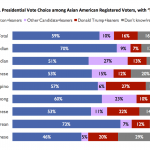By EDITH M. LEDERER
Associated Press
UNITED NATIONS (AP) _ The global famine warning system is predicting a major food crisis if the Ebola outbreak continues to grow exponentially over the coming months, and the United Nations still hasn’t reached over 750,000 people in need of food in West Africa as prices spiral and farms are abandoned.
Coinciding with World Food Day, U.N agencies and non-governmental organizations are scrambling to scale up efforts to avert widespread hunger.
“The world is mobilizing and we need to reach the smallest villages in the most remote locations,” Denise Brown, the U.N. World Food Program’s regional director for West Africa, said in a statement Wednesday. “Indications are that things will get worse before they improve. How much worse depends on us all.”
WFP has said it needs to reach 1.3 million people in need in hardest-hit Liberia, Sierra Leone and Guinea.
So far, the U.N. agency has provided food to 534,000 people, and it expects to reach between 600,000 and 700,000 this month, Bettina Luescher, WFP’s chief spokesperson in North America, told AP. “And we are working hard to reach and scale up to 1.3 million eventually.”
WFP is providing food to patients in Ebola treatment centers, survivors of the virus who have been discharged, and communities which have been quarantined or have seen widespread transmission, including the families of those affected. It is also helping with logistics and is managing the U.N. Humanitarian Air Service between the three affected countries and nearby Dakar, Senegal and Accra, Ghana to help humanitarian workers rapidly deploy to the field.
“We are assessing how families are coping as the virus keeps spreading,” Luescher said. “We expect to have a better understanding of the impact of the Ebola outbreak on food availability and farming activities by the end of October.”
WFP said its first survey using mobile telephones showed that people living in the Kailahun and Kenema districts of Sierra Leone _ where most Ebola cases have been reported _ are finding it harder to feed their families than people in other parts of the country and are resorting to more desperate measures to cope. More than 80 percent of people in those areas said they ate less expensive food, and 75 percent reported that they have reduced the number of daily means and were serving smaller portions.
Kanayo Nwanze, president of the U.N. International Fund for Agricultural Development, said Monday that up to 40 percent of farms have been abandoned in the worst-affected areas of Sierra Leone and there are already food shortages in Senegal and other countries in West Africa because regional trade has been disrupted.
He said preliminary reports suggest that “trade volume in these markets is half of what it was at this time last year.”
Andrea Tamburini, CEO of the non-governmental organization Action Against Hunger which operates in the hardest-hit West African countries, said in an interview Wednesday that his two main concerns are the spike in food costs and the shortage of manpower due to restrictions on movement. This has led to farmers abandoning their crops to seek refuge in locations considered less exposed to the Ebola virus, he said.
The U.N. Food and Agriculture Organization said that in Lofa County, the worst affected rural county in Liberia, the price of food and other commodities increased from 30 to 75 percent, just in August. Action Against Hunger said the price of cassava _ a key staple _ increased by almost 150 percent in the Liberian capital, Monrovia, during the first week in August.
Tamburini said his organization will be running a survey to watch malnutrition rates but giving farmers “seeds and tools will definitely be there as a first step.”
The Famine Early Warning Network known as FEWS NET said in an Oct. 10 report that if the number of Ebola cases reaches 200,000-250,000 by mid-January, large numbers of people in the three worst-affected countries would face moderate to extreme food shortages.
FEWS NET said that in this scenario, traders’ fears of contracting Ebola and restrictions on movement would severely disrupt the availability of food on local markets, contribute to a significant drop in household incomes, and lead to food shortages at local markets.
“Contingency planning for an expanded emergency food assistance response is urgently needed given that the size of the food insecure population could be two to three times higher than currently planned,” it said.
FEWS NET was created in 1985 after devastating famines in East and West Africa by the U.S. Agency for International Development. It provides analysis to help government decision-makers and relief agencies plan for and respond to humanitarian crises.










